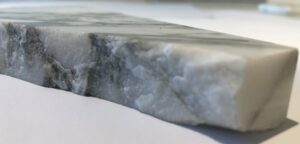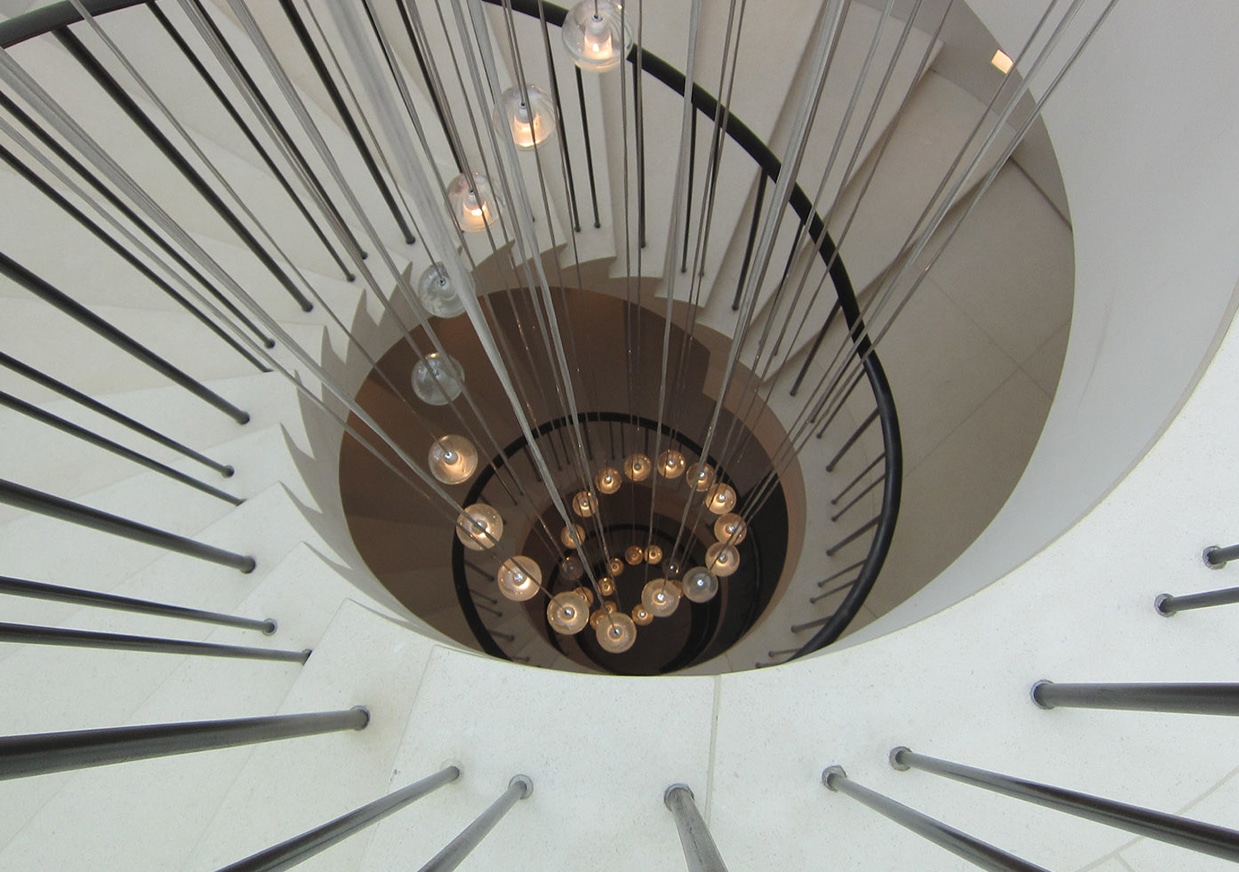The Finer Detail of Interior Stone: Vents, cracks and texture – the skill of delivering a durable stone finish

The complex veining and patterning that makes marble so popular for stone interiors
Stone is a natural product and the variations in every piece of stone mark each finished product as a unique addition to any interiors project. However, making sure these variations are not flaws or faults is not as easy as it looks. The standard trick of running a finger across an imperfection to check for smoothness will tell you whether you have a fissure or crack, but this is often too late – the slab is cut, the kitchen is finished, or the bathroom installed.
An experienced stone mason can make sure these issues are dealt with at the right time – very often before committing to a single cut.
Cracks, fissures and natural stone surfaces
The natural fissures in granite are part of its charm for interior stone use; visible traces of the stone’s creation under heat and pressure. Even so, an experienced mason will take a careful assessment before fabrication, avoiding cutting a weakness into the final product by avoiding having these around cut-outs and seams.
Marble is one of the most popular stone choices and presents its own issues. A stone mason will check for different textures in a slab.

A close up of the texture of a piece of raw marble
A sugary or crystalline marble is more brittle and keeping direct heat away from the slab is important – for example, by using a water-fed polisher to achieve the final finish without friction-generated heat undermining the integrity of the slab.
Expert finishing, fitting and installation for natural stone interiors
Granite may be the strong-man of interior worktop surfaces but its unyielding strength makes it susceptible to cracking. Straight-line faults can appear after bad handling or if the final surface is not installed on an absolutely true flat bedding. Sometimes they are repairable but a crack of this kind, as opposed to the natural and complex patterns of natural fissures, is an ominous sign.
It’s not just a case of a skilled fitting team – a stonemasonry company with suitable storage frames, lifting equipment and cutting tables throughout the process is just as important for making sure stone surfaces and large slabs are properly handled throughout production, with minimal stress on the stone during before it gets to site.

A the integrity of the stone for a staircase will be checked before cutting begins
Stone staircases and structural interior stone
Interiors structural work for natural stone staircases requires larger blocks of stone and this is where a truly skilled stonemason is essential for safety as well as durability.
During the selection and primary cutting phase, a mason will assess the significance of fissures, pattering or vents in raw stone that could cause catastrophic issues for the integrity of the material and either cut accordingly or reject the material.
Often a stone mason will check a new block of stone is good by gently knocking it with a chisel – almost like a tuning fork. The sound it returns gives them an initial insight for vents and cracks through the interior of a block of stone. It’s no exact science but this simple procedure is often the first check a stone mason will make before they set to work assessing the block in detail.
Conclusion
Experience and investment in process matter. Make sure you find a skilled stone masonry company prepared to take you through stone selection, cutting and installation and advise at every stage.
Whether marble slabs or 13 ton Portland blocks, the right equipment, breadth and depth of skills and experience will ensure you have the right stone, properly handled and effectively installed for a durable and high-quality finish, for a kitchen worktop or a natural stone staircase.
#naturalstoneinteriorsdetail
Frequently Asked Questions
- Why is marble considered the ideal choice for natural stone interiors? Marble’s unparalleled complexity and variety, especially its captivating blue and gold veining, make it a favourite for stone interiors. Its unique veining patterns are a significant factor in its selection, emphasising the need for skilled handling to enhance these natural features.
- How can variations in natural stone be managed without resulting in flaws or faults? An experienced stone mason is crucial in identifying and addressing potential issues like fissures or cracks early in the process. Techniques such as feeling for smoothness over imperfections help determine their nature, ensuring that these variations do not compromise the final product.
- What are the challenges of using marble and granite, and how are they overcome? Marble’s brittleness requires careful handling, especially to avoid direct heat during finishing. Granite, while strong, is prone to cracking if mishandled or improperly installed. Skilled stonemasonry and the use of specialised equipment are vital to address these challenges effectively.
- How is the integrity of stone for structural elements like staircases ensured? Careful selection and primary cutting, where a stonemason assesses for fissures or vents, are critical steps. A preliminary sound check with a chisel offers an initial quality assessment, guiding further detailed evaluation.
- What should be considered when selecting a stone masonry company for durable stone finishes? The right stone masonry company should have a deep commitment to quality, demonstrated through their experience, skill level, and investment in the right equipment and processes. This ensures that the stone is properly handled and installed, resulting in a durable and high-quality finish.

